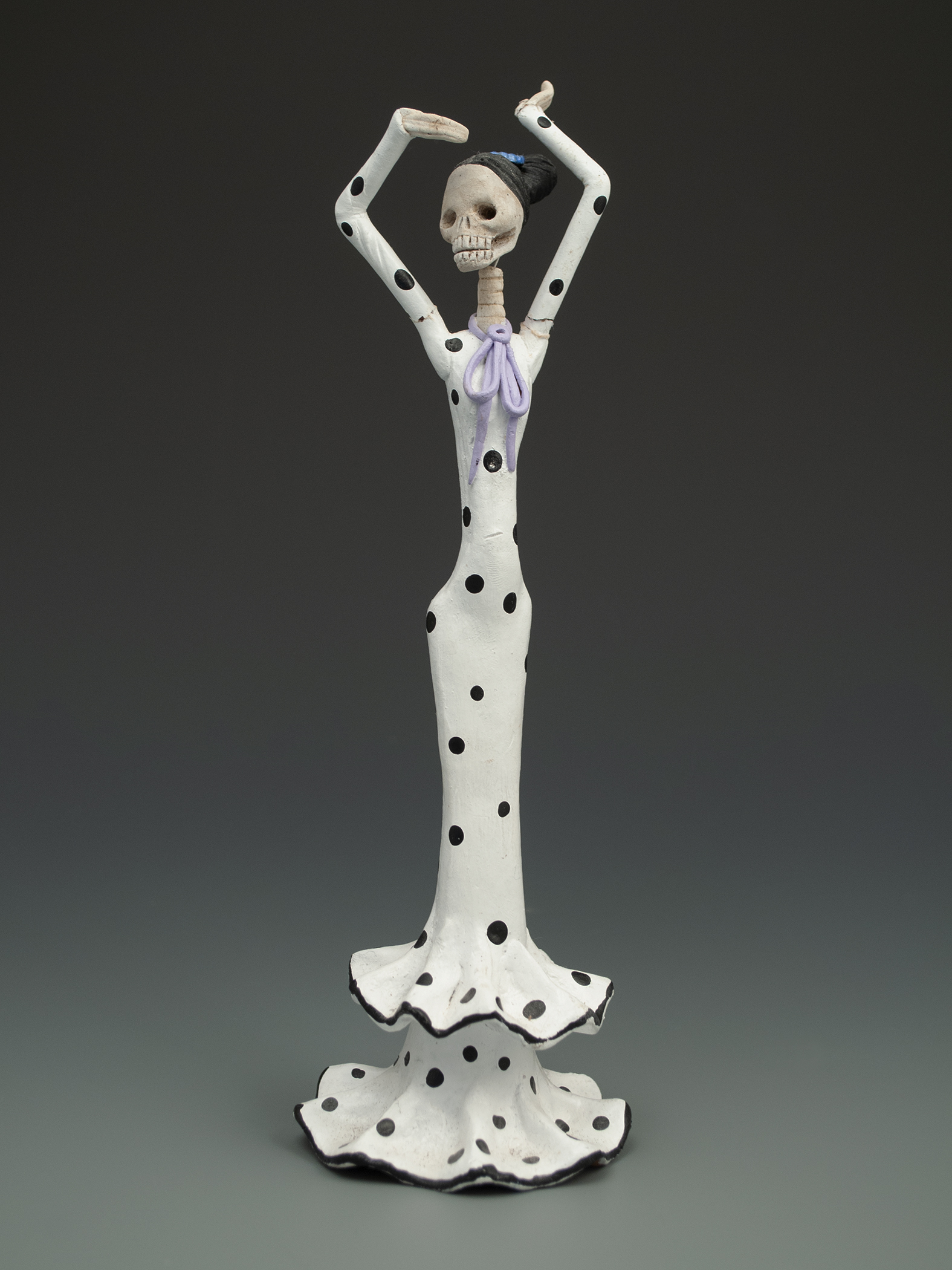Dia de los Muertos Catrina Figure
Mexico, 1984

In October of 1984, Islands magazine assigned me to visit Janitzio—a tiny island in the middle of Michoacán’s Lake Pátzcuaro—to write about their beautiful Day of the Dead celebration. It was the first time I’d heard of Dia de los Muertos, and the timing was eerie: My father had died of a sudden heart attack, at 54, in September.
Janitzio’s all-night ritual was held in the island’s old hilltop cemetery. The intensity of the tradition—illuminated by candles and music, and fragrant with tobacco, frying fish, and liquor—mesmerized me. I fell in love with the icons of the holiday: the candy skulls, chains of marigolds, and pan de los muertos (“bread of the dead”), and especially the elegant Catrina: a worldly, materialistic Mexican woman dressed in European haute couture, reduced to a dancing skeleton.
Though Catrina originated in the early 20th century (as a satire of upper-class pretensions by Mexican artist José Guadalupe Posada), I had seen a similar image in Nepal. Citipati is a Buddhist image of two gleefully dancing skeletons, male and female, celebrating release from their bodies.
After my father died, I discovered, among his private notes, a confession that he suffered from severe depression. He’d hidden it well, beneath a thick layer of joking, flirtation, and bonhomie. But it all came together when I realized with a shock that I’d never seen him dance. Not once. Not even at my bar mitzvah.
I thought about him often during that all-night ceremony in Janitzio’s candlelit graveyard.
He departed this world when I was 30, but I barely knew him. I wondered, as I sat among the tombstones, who my father really was beneath his charming disguise—and where he might be now. Maybe it’s true, as a Hindu sage once said, that “Dying is like taking off a tight shoe.”
I hope so. Maybe my father is dancing at last, spinning Catrina in his bony arms.
